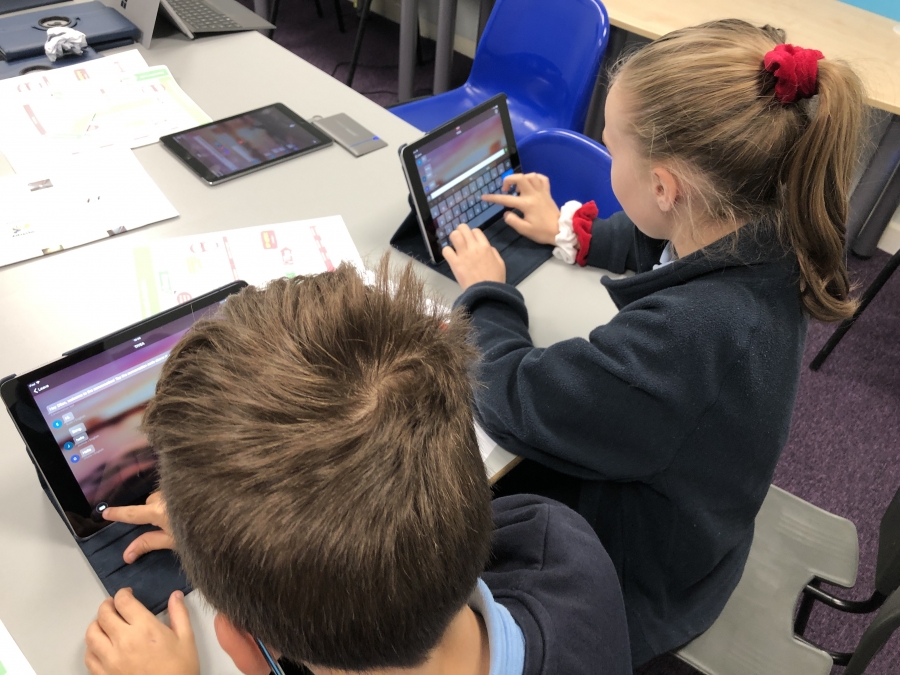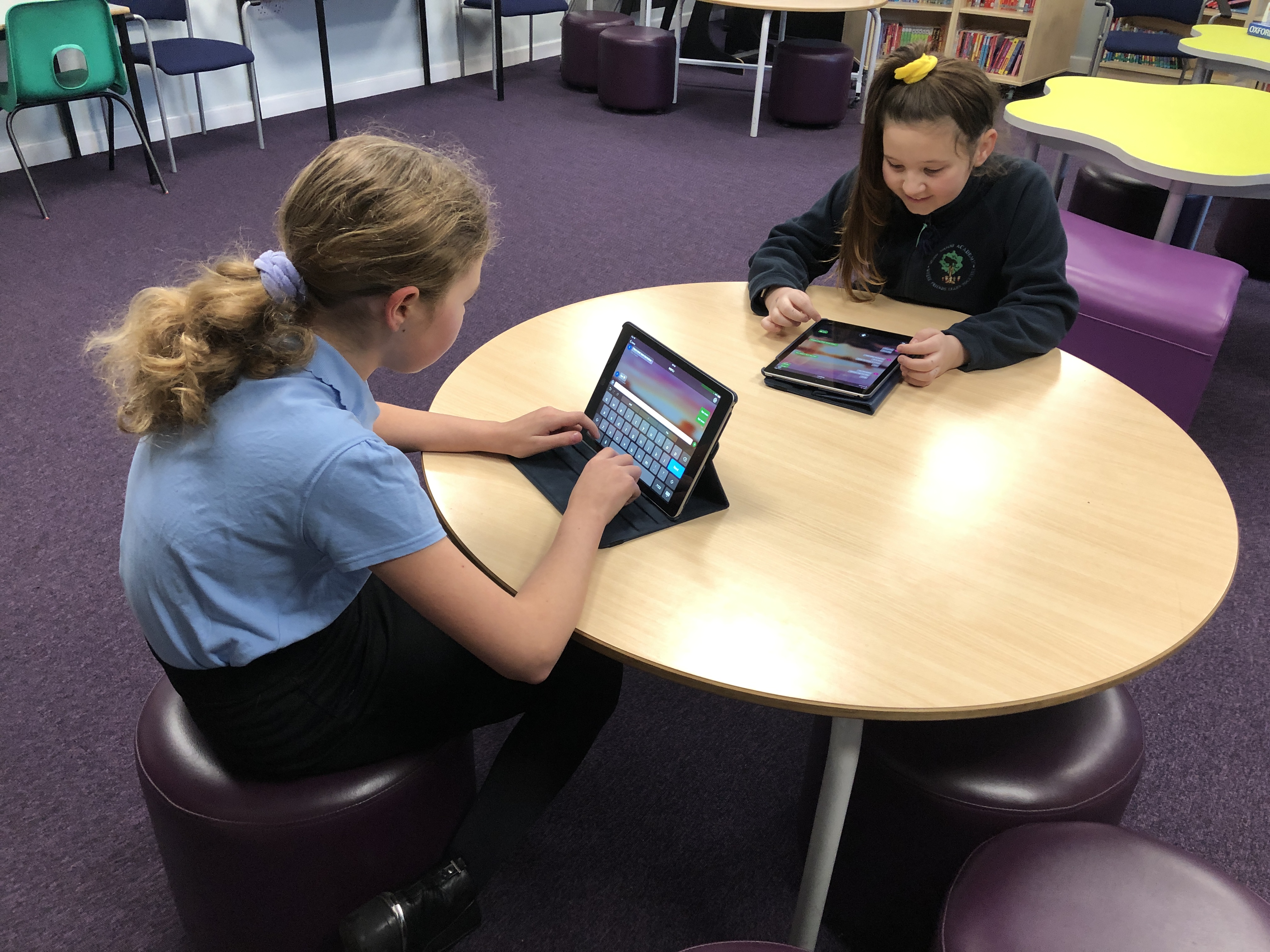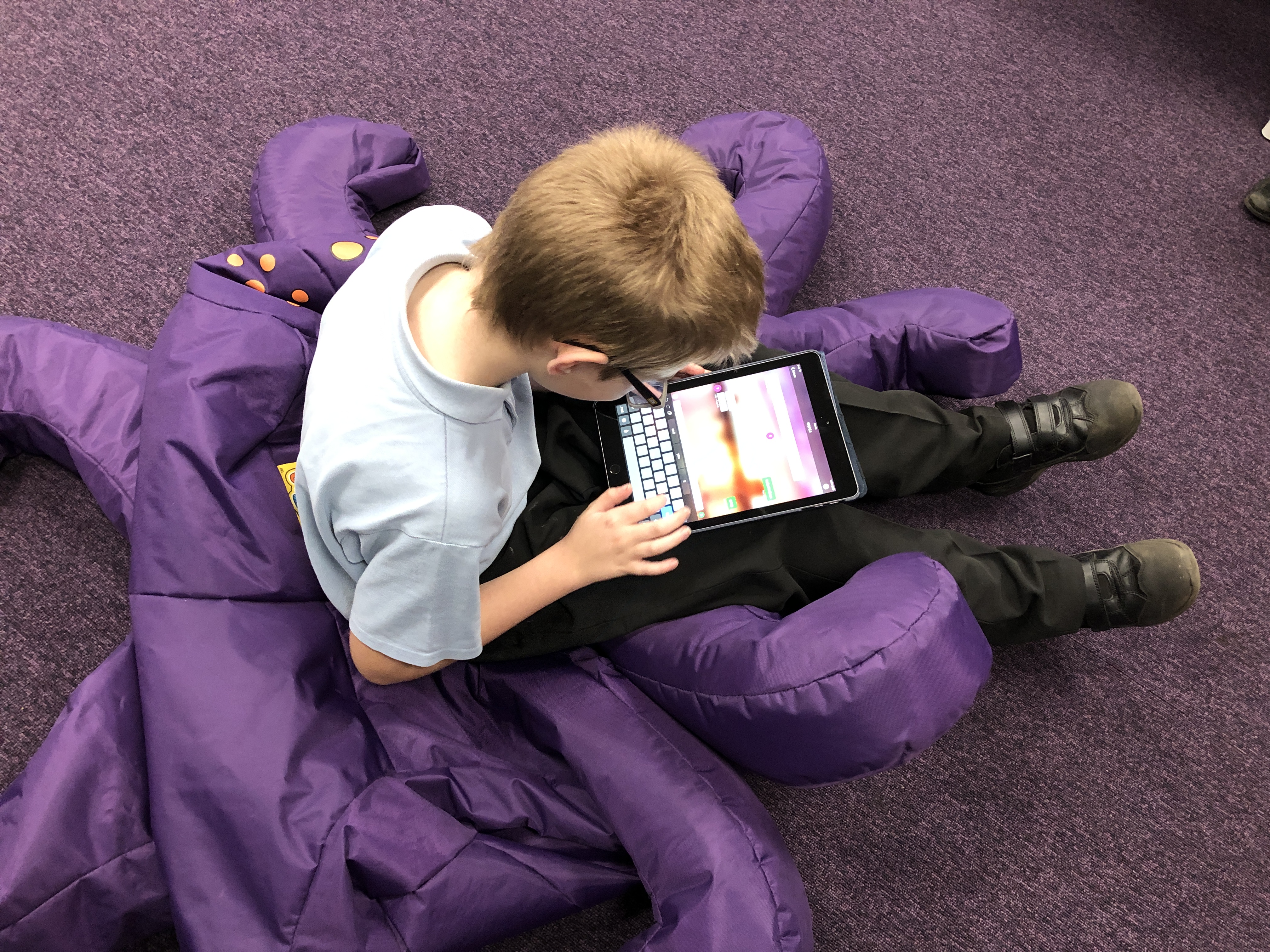Over the last ten years, we have been lucky enough to take part in a whole range of international projects thanks to the platform eTwinning – supported in the UK by the British Council. We have designed board games for one another, shared favourite traditional stories, celebrated special events and even helped to reduce the amount of plastic waste within our different communities. These collaborations have helped the children fully appreciate the value of teamwork, collaboration and communication.
So this year, as a means of supporting our Finnish partner school with a project where our Y6 pupils were asked to help teach their children English grammar skills, we were delighted to be introduced to the fabulous Microsoft Translator app by the magnificent Donna Vaughan (@medv2). One of the barriers that we get with primary children collaborating with each other, is the issue of language and the children being unable to fully express their opinions to one another, which can obviously become frustrating and means that projects aren’t always able to delve as deep in to a subject area as much as people had initially hoped.
However, since we have started using the app, the children are able to fully express themselves due to the instantaneous translation that it provides. Through the free app, the two schools are given a safe and secure space to communicate with one another by sharing a unique code. For example, my class will type in their question or response to our Finnish partners in English, but then our partners receive the details in Finnish as well as English to ensure that they can fully understand what is being said. They will then respond in Finnish if they prefer and then my children will receive that response in the two languages as well. It really is that simple and incredibly accurate.
To say that the children have absolutely loved taking part in the project is an understatement. They have been so excited, teaching friends what adverbs are, how to use them and then giving quick-fire questions as a means of seeing whether or not their input has been useful. It has not only helped our colleagues in Finland to learn about the English language, but it has reinforced these grammatical terms for our own children as they have had to create special crib sheets with fully explained definitions, with example sentences as well as responses to expected questions in preparation for the sessions.
Alongside the teaching of grammar, the children have also been able to find out about the different hobbies and interests that the Finnish children have. Previously, when we have tried this, the response from our partner school has understandably been limited due to the language barriers. Children have been left saying what their favourite hobby is but not being able to fully explain why it is their favourite, due to their limited language skill. However, since we have started this project, we have found that we have been able to have much deeper discussions between the children. They are now able to find out so much more about each other and recognise many more similarities between one another due to the language limitations being removed. We have had the children discussing what they have done on holidays, how they have stayed safe online as well as comparing and contrasting the two schools. Rather than the teachers having to slow lessons down to translate what has been said or clarify what a child is trying to express, the conversations have been able to flow smoothly and coherently.
As the project progresses, we are not only hoping to continue to support one another with developing specific grammar skills, but also to discuss further aspects such as hopes and dreams for the future, as well as opinions on issues such as climate change and health and wellbeing. These are areas that we previously would have found difficult to fully explore, however, now that the children have the freedom of using their own language to fully express themselves, we think that the discussion will be much more insightful and challenging. Exactly what the children will want and exactly what they will need.
For more information about Shaw Wood Academy http://shawwoodacademy.co.uk




















